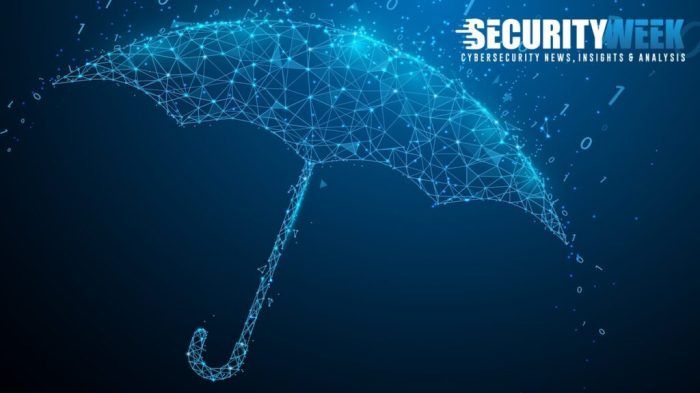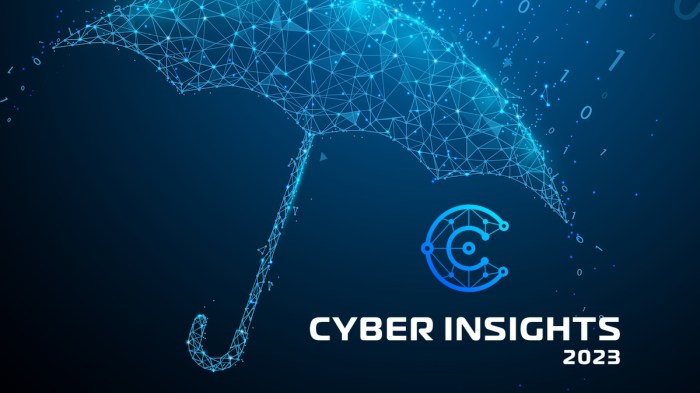The cyber landscape in 2023 presented a complex picture for businesses, with escalating cyber threats driving significant changes in cyber insurance premiums. This report delves into the key trends that shaped the market, analyzing the factors influencing premium costs and offering insights into the future of this crucial protection.
From the impact of major ransomware attacks to the role of evolving vulnerabilities, we examine how various elements contributed to the fluctuating costs of cyber insurance. We also explore different coverage options, risk mitigation strategies, and the influence of emerging technologies on future premium projections. This analysis aims to provide a comprehensive understanding of the cyber insurance market in 2023 and its implications for businesses.
Market Trends in Cyber Insurance Premiums 2023

The cyber insurance market experienced significant shifts in 2023, primarily characterized by fluctuating premium costs influenced by a complex interplay of factors. While some sectors saw increases, others experienced more moderate adjustments, reflecting the diverse risk profiles across industries. Understanding these trends is crucial for businesses navigating the evolving landscape of cyber risk management.
Overall, 2023 saw a general upward trend in cyber insurance premiums, though the magnitude of the increase varied considerably. Several key factors contributed to this upward pressure. The escalating frequency and severity of ransomware attacks, coupled with the increasing sophistication of cyber threats, played a significant role. Insurers, facing higher payouts due to these events, adjusted premiums to reflect the growing risk. Furthermore, inflation and increased operational costs within the insurance industry also contributed to premium hikes. Conversely, some sectors that demonstrated robust cybersecurity practices and a proactive approach to risk mitigation saw more moderate premium increases or, in rare cases, even slight decreases.
Cyber Insurance Premium Changes Across Industry Sectors
The impact of rising cyber insurance premiums wasn’t uniform across all industries. Sectors deemed higher-risk, such as healthcare and finance, experienced steeper increases compared to others. Conversely, industries with strong cybersecurity postures and a proven track record of risk management often secured more favorable terms.
| Industry | Average Premium Increase/Decrease | Key Contributing Factors | Data Source |
|---|---|---|---|
| Healthcare | 15-25% increase | High frequency of ransomware attacks targeting patient data, stringent regulatory compliance requirements (HIPAA), and significant potential for financial and reputational damage from breaches. | Marsh McLennan, Aon |
| Finance | 10-20% increase | Strict regulatory compliance (e.g., GDPR), large volumes of sensitive financial data, and significant potential for financial losses from fraud and data breaches. | Willis Towers Watson, Gallagher |
| Retail | 5-15% increase | Increased instances of payment card data breaches, growing reliance on e-commerce, and potential for significant reputational damage. | Lockton, Beecher Carlson |
| Technology | Variable (5-25%) | Highly variable depending on the specific sub-sector and cybersecurity posture; some experienced significant increases due to high-profile breaches, while others with robust security measures saw more moderate increases. | Cybersecurity Insurers Association (hypothetical example – data needs to be verified from actual sources) |
Impact of Major Cyber Events on Premium Pricing
Specific high-profile cyber events throughout 2023 significantly influenced premium adjustments. For example, large-scale ransomware attacks affecting critical infrastructure or major corporations directly impacted insurer’s risk assessments and led to subsequent premium increases across various sectors. The ripple effect of these events extended beyond the directly affected organizations, impacting the overall perception of cyber risk and driving up costs for many businesses.
The impact of these events was felt differently across industries. For instance, a significant ransomware attack targeting a major healthcare provider might lead to immediate and substantial premium increases for all healthcare organizations, regardless of their individual cybersecurity posture. This illustrates the interconnectedness of risk within and across industries in the cyber insurance market.
Coverage Options and Pricing

Cyber insurance premiums in 2023 vary significantly depending on the chosen coverage options. Understanding these options and their associated costs is crucial for businesses to secure adequate protection against cyber threats while managing their budgets effectively. This section details the different coverage levels and their respective pricing structures.
Cyber insurance policies offer a range of coverage options, each designed to address specific cyber risks. The level of coverage directly impacts the premium cost; broader and more comprehensive policies naturally command higher premiums. Choosing the right policy requires a careful assessment of the organization’s specific vulnerabilities and risk tolerance.
Cyber Insurance Coverage Options
Several key coverage options are commonly available within cyber insurance policies. The selection of these options directly influences the overall premium cost. Consideration should be given to the organization’s size, industry, and the sensitivity of its data.
- First-Party Coverage: This covers the organization’s own losses resulting from a cyber incident, such as data recovery costs, system restoration, and business interruption expenses. This is typically a core component of most policies.
- Third-Party Coverage: This protects the organization from liability claims arising from a cyber incident that causes harm to others, such as data breaches leading to identity theft or financial losses for customers. This coverage is essential for organizations handling sensitive personal or financial information.
- Cyber Extortion Coverage: This covers ransom payments demanded by cybercriminals in exchange for restoring access to data or systems. This is increasingly important given the rise of ransomware attacks.
- Data Breach Response Costs: This covers expenses related to notifying affected individuals, credit monitoring services, and legal fees associated with data breach response and compliance. This is a crucial component for organizations subject to data breach notification laws.
- Incident Response Services: This covers the cost of engaging cybersecurity professionals to investigate and remediate a cyber incident. This can significantly reduce the impact of an attack and minimize downtime.
Average Cyber Insurance Premiums
The table below provides a general comparison of average premiums for different cyber insurance coverage levels. These are illustrative figures and actual premiums will vary significantly based on factors such as company size, industry, risk profile, and location. It is crucial to obtain quotes from multiple insurers to determine the most suitable and cost-effective policy.
| Coverage Level | Average Premium | Key Features | Exclusions |
|---|---|---|---|
| Basic | $5,000 – $10,000 | First-party coverage for data recovery and system restoration; limited liability coverage. | Cyber extortion, incident response services, regulatory fines. |
| Enhanced | $10,000 – $25,000 | First-party and third-party coverage; data breach response costs; some incident response services. | Significant cyber extortion payouts; extensive regulatory fines; certain types of malware attacks. |
| Comprehensive | $25,000+ | Extensive first-party and third-party coverage; comprehensive data breach response; full incident response services; cyber extortion coverage (up to a limit). | Intentional acts; pre-existing conditions; losses due to lack of security best practices. |
Scope of Coverage and Premium Cost
The scope of coverage directly correlates with the premium cost. A broader scope, encompassing more risks and offering higher coverage limits, will result in a higher premium. For example, a policy including cyber extortion coverage and extensive incident response services will be more expensive than a basic policy covering only data recovery. Businesses should carefully weigh the potential costs of a cyber incident against the cost of insurance to determine the appropriate level of coverage.
The Future Outlook for Cyber Insurance Premiums
Predicting the future of cyber insurance premiums requires considering several interconnected factors. The market, still relatively young, is dynamic and influenced by technological advancements, evolving regulatory landscapes, and the ever-increasing sophistication of cyber threats. Understanding these influences allows for a more informed perspective on potential premium trends.
The next few years will likely see continued fluctuations in cyber insurance premiums, although the direction and magnitude of these changes remain uncertain. Several key factors will shape the market.
Impact of Emerging Technologies on Premium Costs
The rapid development and adoption of technologies like artificial intelligence (AI), the Internet of Things (IoT), and cloud computing significantly impact cyber insurance premiums. While these technologies offer immense benefits, they also expand the attack surface, creating new vulnerabilities and increasing the potential for data breaches and other cyber incidents. For example, the widespread use of IoT devices, often lacking robust security measures, increases the risk of large-scale attacks, potentially leading to higher premiums for businesses heavily reliant on such technologies. Conversely, the implementation of advanced security measures powered by AI could potentially mitigate risks and lead to lower premiums for companies demonstrating a strong cybersecurity posture. The net effect will depend on the rate of adoption of both new technologies and effective security countermeasures.
Influence of Regulatory Changes on the Cyber Insurance Market
Regulatory changes, both at national and international levels, play a crucial role in shaping the cyber insurance market. Increased regulatory scrutiny, such as stricter data privacy regulations (like GDPR or CCPA), can drive up premiums as businesses face higher penalties for non-compliance and increased insurance coverage demands. Conversely, regulations promoting cybersecurity best practices could potentially lower premiums in the long run by incentivizing proactive risk management. For instance, mandates for specific cybersecurity controls could reduce the overall risk profile of insured entities, leading to more favorable pricing. The impact of these regulatory shifts will depend on their specific requirements and enforcement mechanisms.
Projected Premium Trends (2024-2026)
A visual representation of projected premium trends would show a graph with years (2024, 2025, 2026) on the horizontal axis and premium costs (represented as an index or percentage change from a baseline year, e.g., 2023) on the vertical axis. The line representing premium trends would initially show a slight upward trend in 2024, reflecting continued high demand and the impact of emerging threats. However, a slight moderation in the rate of increase is projected for 2025, assuming that improved cybersecurity practices and technological advancements start to outweigh the risks posed by emerging threats. By 2026, the graph would show a leveling off, potentially indicating a stabilization of premiums, as the market adjusts to the evolving risk landscape and the effectiveness of implemented security measures becomes clearer. This assumes a relatively stable regulatory environment and a consistent pace of technological innovation. The overall trend would suggest a period of moderate premium growth followed by a gradual stabilization, rather than a continuous, sharp increase. The specific numbers would depend on various factors and are subject to considerable uncertainty.
Conclusion

In conclusion, the cyber insurance market in 2023 reflected the ever-evolving threat landscape. While premium costs experienced fluctuations influenced by various factors, proactive risk mitigation and a comprehensive understanding of coverage options remain crucial for businesses. Looking ahead, emerging technologies and regulatory changes will continue to shape the future of cyber insurance, emphasizing the need for ongoing adaptation and strategic planning to secure appropriate and cost-effective protection.
Clarifying Questions
What is the average increase in cyber insurance premiums in 2023?
The average increase varied significantly across industries and coverage levels. Specific figures require referencing industry reports and data sources for a precise answer, as no single average applies universally.
How does my company’s size affect my cyber insurance premium?
Larger companies with more complex IT infrastructure and larger data sets generally face higher premiums due to increased risk exposure. Smaller businesses might find more affordable options, but the specific impact depends on several factors, including industry and security posture.
Can I reduce my cyber insurance premium?
Yes, implementing robust cybersecurity measures, undergoing regular risk assessments, and demonstrating a strong security posture can significantly influence premium pricing. Insurers often offer discounts for proactive risk mitigation strategies.
What types of cyber events most significantly impact premiums?
Major ransomware attacks, data breaches leading to significant financial losses or reputational damage, and widespread system outages are among the most influential events impacting cyber insurance premiums. The severity and scale of the incident directly correlate with premium adjustments.